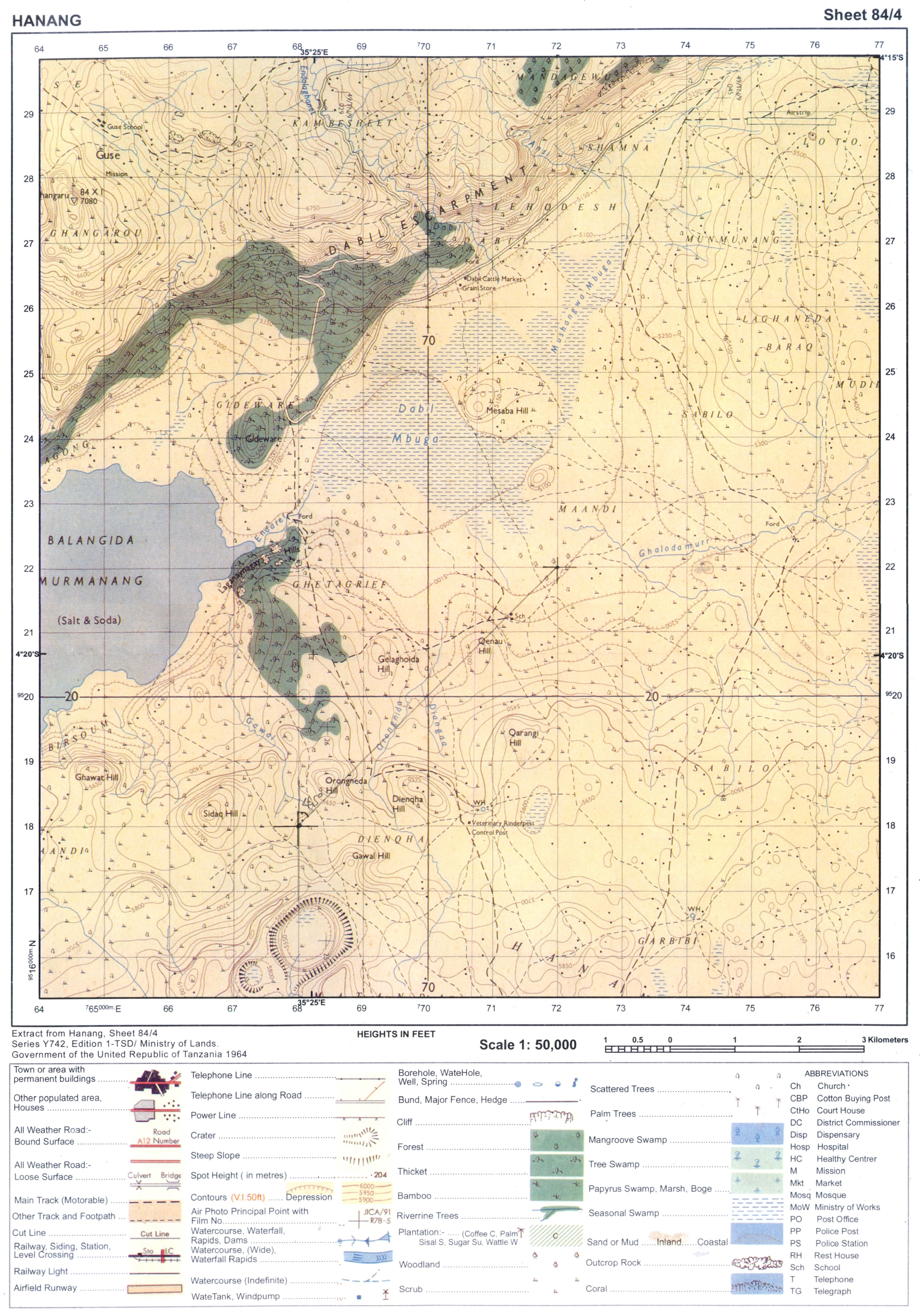THE UNITED REPUBLIC OF TANZANIA NATIONAL EXAMINATIONS COUNCIL
ADVANCED CERTIFICATE OF SECONDARY EDUCATION EXAMINATION
113/1 Geography 1
(For Both School and Private Candidates)
Time: 3 Hours Tuesday, 03rdMay 2016 p.m.
Instructions
1. This paper consists of nine (9) questions in sections A and B.
2. Answer a total of five (5) questions; two (2) questions from section A and three (3) questions from section B. Question number one (1) is compulsory.
3. In section A, question number one (1) carries 25 marks and the rest 15 marks, while in section B each question carries 20 marks.
4. Credit will be given for the use of relevant sketch maps and diagrams.
5. Map extract of HANANG (sheet 84/4) For question number one (1) is provided.
6. Non programmable calculators may be used.
7. Cellular phones are not allowed in the examination room.
8. Write your Examination Number on every page of your answer booklet(s).
SECTION A (40 marks)
Answer question number 1 and any other question from this section.
1. Study carefully the map extract of HANANG Sheet 84/4 provided then answer the following questions:
(a) Calculate the area covered by Lake Balangida in square kilometers.
(b) What type of landscapes does the map depict?
(c) Identify the type of drainage pattern of the mapped area.
(d) What are the three major indicators of climate in the area? Give evidence.
(e) With evidence from the map, outline types of soil found in the area.
(f) Explain four land uses in the mapped area.
(g) A farmer was at grid reference 680160. He saw fire in the North East (4.2 kilometers). (i) Find the grid reference position of the fire
(ii) Name the physical obstacles which the farmer will face if he walks in a straight line to the position of the fire.
View Ans
2. (a) Describe six shortcomings of using questionnaires in research data collection.
(b) Analyse advantages and disadvantages of the case study design.
View Ans
3. (a) Explain five qualities and three limitations of prismatic compass survey.
(b) Classify obstacles encountered in chain survey.
View Ans
4. Study carefully the following photograph and answer the questions that follow:

(a) Name the type of photograph.
(b) Explain three basic techniques for interpreting the type of the photograph named in (a) above.
(c) Identify the major economic activity that might take place in the area.
(d) Describe four factors that favour development of the major economic activity in (c) above.
(e) Briefly describe the natural causes of loss of biodiversity in the area.
(f) With evidences from the photograph, describe parts of the given photograph.
(g) Name three possible places in Tanzania where the photograph might have been taken.
View Ans
SECTION B (60 marks)
5. Explain eight factors responsible for the occurrence of river regime.
View Ans
6. Analyse the causes of the plate’s movements of the lithosphere.
View Ans
7. Describe five meteological and edaphic effects on global vegetation variations.
View Ans
8. Examine eight adaptive features of plants to desert hostile environment.
View Ans
9. Describe volcanoes according to their mode of formation.

View Ans
THE UNITED REPUBLIC OF TANZANIA NATIONAL EXAMINATIONS COUNCIL
ADVANCED CERTIFICATE OF SECONDARY EDUCATION EXAMINATION
113/2 GEOGRAPHY 2
HUMAN AND WORLD ECONOMIC GEOGRAPHY
(For Both School and Private Candidates)
Time: 3 Hours Friday, 06th May 2016 p.m.
Instructions
1. This paper consists of eight (8)questions sections A and B.
2. Answer a total of five (5)questions, choosing two (2)questions from section A and three (3) questions from section B.
3. Each question carries twenty (20)marks.
4. Cellular phones are not allowed in the examination room.
5. Write your Examination Number on every page of your answer booklet(s).
SECTION A (40 marks)
POPULATION AND DEVELOPMENT
Answer two (2) questions from this section.
1. Providing eight points, account for high fertility rate in Tanzania.
View Ans
2. Examine four benefits and four problems of the ‘one child policy’ in China.
View Ans
3. Giving eight points, discuss the impact of rapid population growth to the environment
View Ans
SECTION B (60 marks)
REGIONAL FOCAL STUDIES
Answer three (3) questions from this section.
4. Analyse eight problems facing transport and communication sector in Tanzania.
View Ans
5. “Timber industry and environmental conservation are incompatible”. Justify the statement with six points.
View Ans
6. The agricultural sector is the backbone for Tanzania’s economy. Justify this argument with six points.
View Ans
7. Using Japan as an example, evaluate six dangers of nuclear power in the World.
View Ans
8. Giving eight points, account for the development of dairy industry in the Netherlands.
View Ans
 For Call,Sms&WhatsApp: 255769929722 / 255754805256
For Call,Sms&WhatsApp: 255769929722 / 255754805256
 For Call,Sms&WhatsApp: 255769929722 / 255754805256
For Call,Sms&WhatsApp: 255769929722 / 255754805256
 For Call,Sms&WhatsApp: 255769929722 / 255754805256
For Call,Sms&WhatsApp: 255769929722 / 255754805256